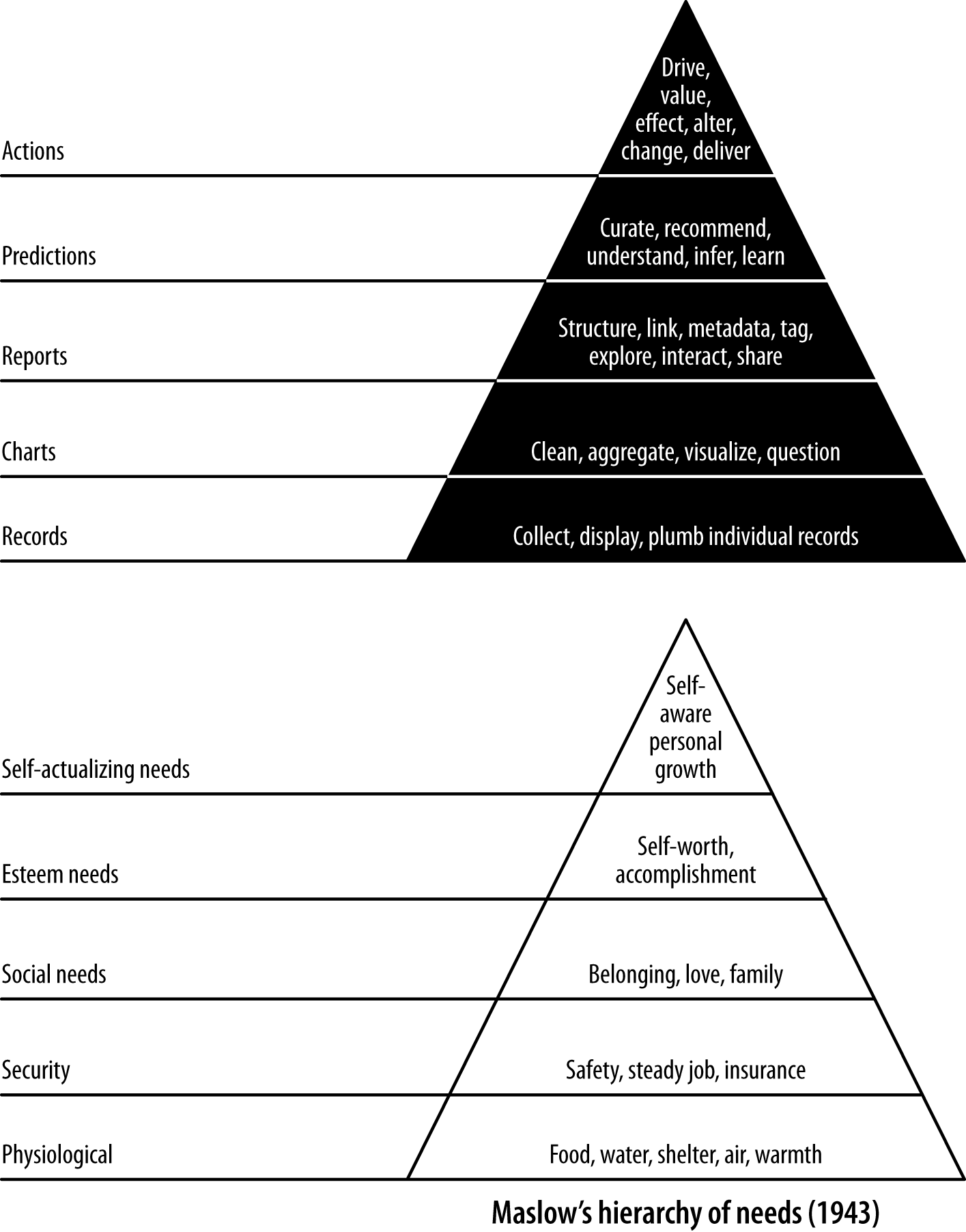Part II. Climbing the Pyramid
If you can see your path laid out in front of you step by step, you know it’s not your path. Your own path you make with every step you take. That’s why it’s your path.
Joseph Campbell
Part II introduces the schema for the rest of the book: the data-value pyramid. Throughout the rest of our lessons, we will use the data-value pyramid to iteratively build value from very simple records up to interactive predictions. We begin with theory, then dive into practice using the framework I previously introduced.
Building Agile Data Science products means staging an environment where reproducible insights occur, are reinforced, and are extended up the value stack. It starts simply with displaying records. It ends with driving actions that create value and capture some of it. Along the way is a voyage of discovery.
The structure of this voyage, shown in Figure II-1, is called the data-value pyramid.
The data-value stack mirrors Maslow’s hierarchy of needs in the sense that lower levels must precede higher levels. The higher levels (like predictions) depend on the lower levels (like reports), so we can’t skip steps. If we do so, we will lack sufficient structure and understanding of our data to easily build features and value at the higher levels.

Figure II-1. The Jurney–Warden data-value pyramid of 2011
The data-value stack begins with the simple display of records, where ...
Get Agile Data Science 2.0 now with the O’Reilly learning platform.
O’Reilly members experience books, live events, courses curated by job role, and more from O’Reilly and nearly 200 top publishers.

